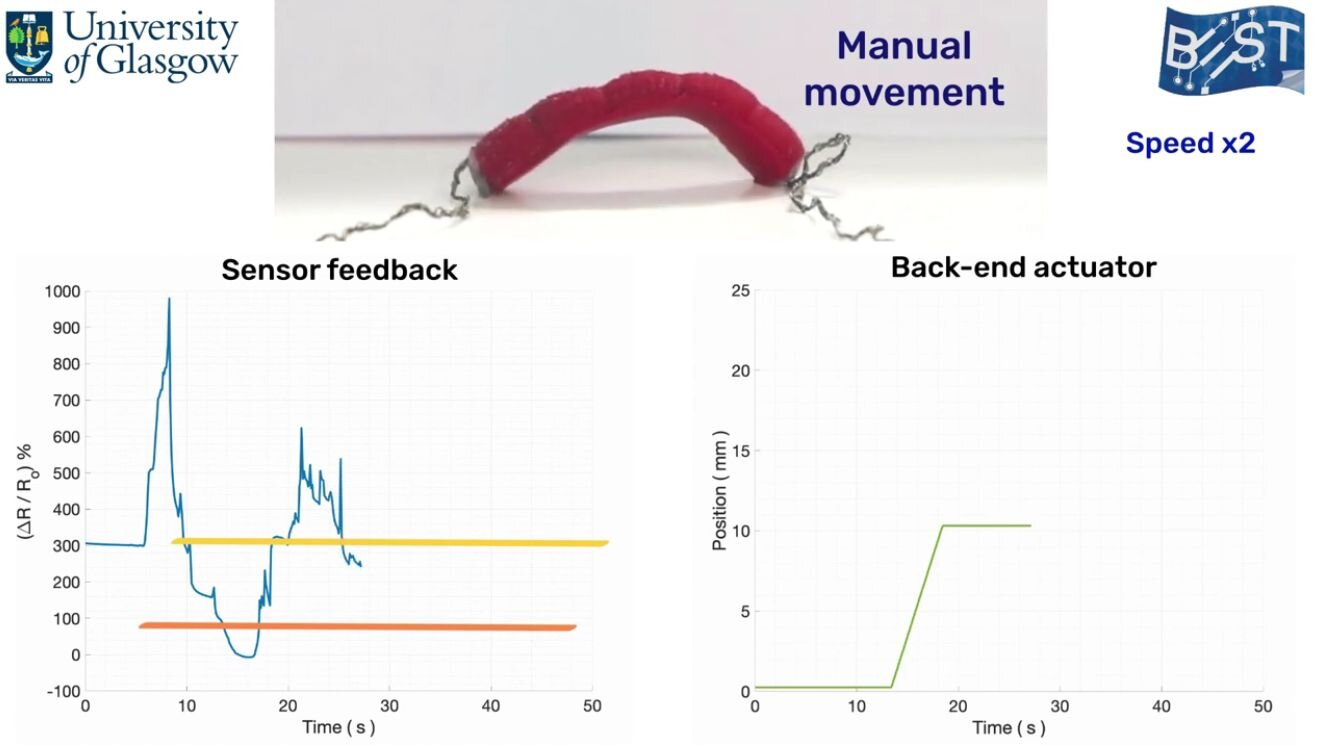Super-stretchy wormlike robots capable of ‘feeling’ their surroundings
Super-stretchy wormlike robots capable of ‘feeling’ their surroundings could find applications in industry and prosthetics, scientists say.
A team of engineers from the University of Glasgow have developed robots with forms of motion inspired by the movements of inchworms and earthworms.
The soft, wiggly roboworms can stretch up to nine times their own length and are capable of a form of proprioception—the method by which biological organisms like worms perceive their position in space. That ability, not demonstrated before in the field of soft robotics, allows the robot worms to squeeze into tight spots that their conventionally rigid robot counterparts cannot reach.
The researchers hope that their breakthrough could lead to a new generation of robots capable of autonomously exploring difficult-to-reach places. They could find applications in mining, construction or even in disaster relief to search for survivors trapped in rubble.
Their technology could also be used in developing more lifelike prosthetics, or equipping robots with the ability to wrap around and lift irregularly-shaped heavy objects.
The development builds on previous research from the University of Glasgow’s Bendable Electronics and Sensing Technologies (BEST) group, which has found novel ways to embed flexible electronics into deformable surfaces.
That expertise has allowed them to build intrinsic strain sensors into the wormlike robots, which around 4.5 centimetres long. They are covered in ‘skin’ made from a form of stretchy plastic called Ecoflex and a graphite paste developed by the team.
Tiny permanent magnets attached at either end of the robots’ tubular bodies help them to move along a metal surface. The sensors in their skin help them ‘sense’ their movements in relation to their bodies by measuring the electrical resistance of the graphite paste, which changes as the robots’ bodies expand. When the resistance reaches a preset maximum value, the body contracts again, moving it forward.
Professor Ravinder Dahiya of the University of Glasgow’s James Watt School of Engineering leads the BEST group, which developed the system.
Professor Dahiya said: “Proprioception is a vital characteristic of many forms of biological life, and scientists have long been inspired to try and develop engineered systems which mimic this ability.
“Our bioinspired robots are a step towards creating soft, flexible robot systems capable of the infinite directions of movement that nature has created in inchworms and earthworms.
“The ability of soft robots like these to adapt to their surroundings through seamlessly embedded stretchable sensors could help autonomous robots more effectively navigate through even the most challenging environments.”
The team’s paper, titled “Bioinspired Inchworm and Earthworm like Soft Robots with Intrinsic Strain Sensing,” is published in Advanced Intelligent Systems.
Soft skin-like robots you can put in your pocket
Prakash Karipoth et al, Bioinspired Inchworm‐ and Earthworm‐like Soft Robots with Intrinsic Strain Sensing, Advanced Intelligent Systems (2021). DOI: 10.1002/aisy.202100092
Citation:
Super-stretchy wormlike robots capable of ‘feeling’ their surroundings (2021, September 6)
retrieved 12 September 2021
from https://techxplore.com/news/2021-09-super-stretchy-wormlike-robots-capable.html
This document is subject to copyright. Apart from any fair dealing for the purpose of private study or research, no
part may be reproduced without the written permission. The content is provided for information purposes only.
For all the latest Technology News Click Here
For the latest news and updates, follow us on Google News.

